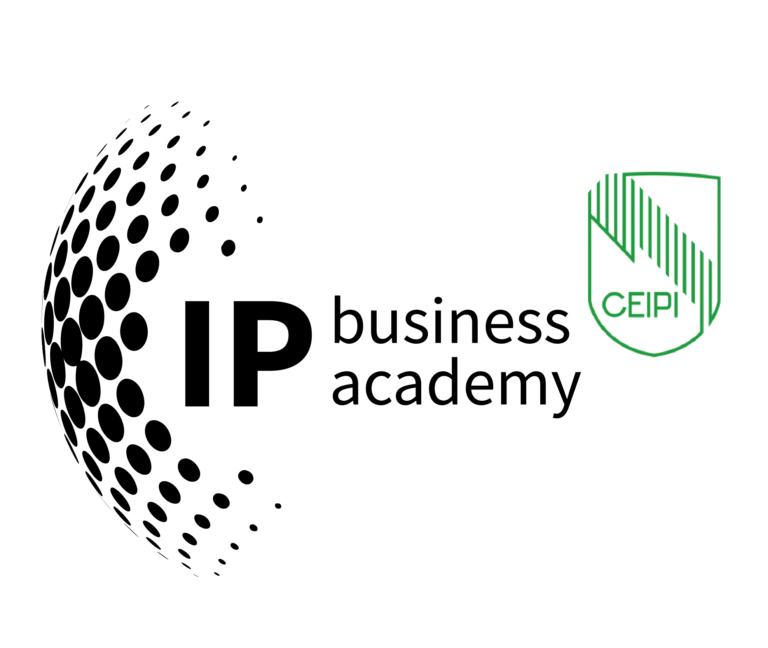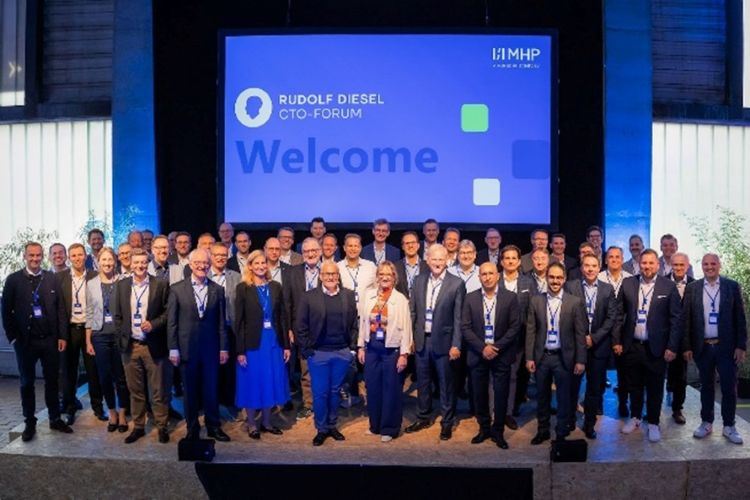From Sovereignty to Speed: Inside the CTO Forum 2025 at MHP Porsche
The 2025 CTO Forum at MHP Porsche gathered more than fifty chief technology leaders for a frank conversation about innovation under pressure: geopolitics reshaping supply chains, regulation pacing ahead of rollout, quantum and agentic AI maturing faster than governance, and the rising expectation that CTOs orchestrate not only technology stacks but also ecosystems. What emerged in Ludwigsburg was a compact playbook: secure critical capabilities, compress decision cycles, and hard‑wire IP and AI into product and portfolio strategy.
 Opening cadence and intent
Opening cadence and intent
After a welcome by the hosts, the day set off with a crisp frame: which technologies will shape our industries by 2035—and what must we change in our organizations now to be ready? The framing made one thing explicit: speed without sovereignty is fragile, and sovereignty without speed is irrelevant. That tension—between regulatory demands and market tempo—became the through‑line of the entire forum.
Reading the Technology Map to 2035
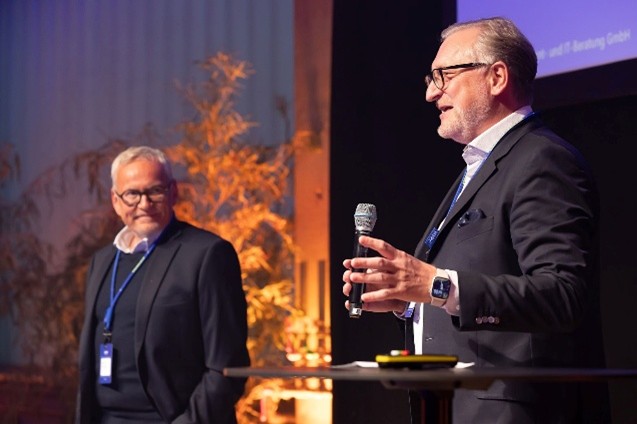 The morning keynote explored the technology stack that will condition competitiveness over the next decade: AI and automation at every layer, platformized hardware and software architectures, lifecycle‑oriented engineering, and design for resilience. The core message to CTOs was pragmatic: decouple where it hurts, modularize where it pays, and invest in sensing—technical, regulatory, and market—so you can course‑correct early rather than late. The keynote primed the subsequent debate by asking whether Europe can move fast on critical capabilities while maintaining high standards.
The morning keynote explored the technology stack that will condition competitiveness over the next decade: AI and automation at every layer, platformized hardware and software architectures, lifecycle‑oriented engineering, and design for resilience. The core message to CTOs was pragmatic: decouple where it hurts, modularize where it pays, and invest in sensing—technical, regulatory, and market—so you can course‑correct early rather than late. The keynote primed the subsequent debate by asking whether Europe can move fast on critical capabilities while maintaining high standards.
Panel: “Sovereignty vs. Speed” — a dilemma with operational consequences
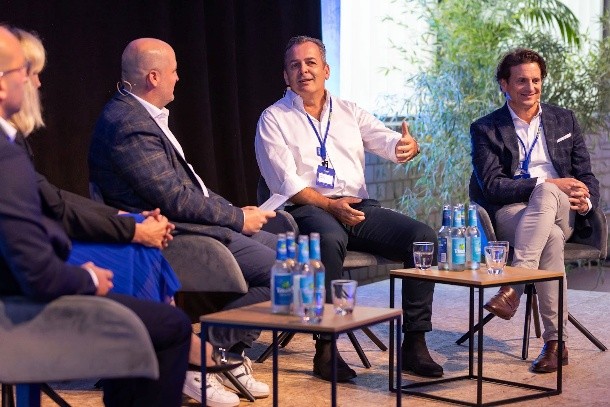 A cross‑functional panel from industry, tech, and legal brought the dilemma to ground level. The discussion surfaced three operational truths:
A cross‑functional panel from industry, tech, and legal brought the dilemma to ground level. The discussion surfaced three operational truths:
- Compliance must be designed into engineering: treat regulation as a system constraint during concept and architecture, not as a gate at the end. Toolchains, data models, and change processes need to reflect this “compliance‑by‑construction.”
- Supply‑chain re‑wiring is a product decision: multi‑sourcing, traceability, and digital product passports are design choices that affect BOM, software provenance, and service operations.
- Speed comes from clarity: reduce decision latency by establishing crisp decision rights, shared KPIs across functions, and pre‑approved playbooks for high‑uncertainty moves.
The panel’s consensus was sober: sovereignty and speed are not enemies if CTOs explicitly architect for both.
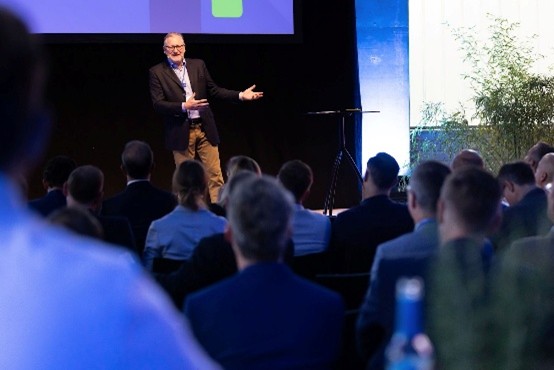 AI, IP, and the path to production
AI, IP, and the path to production
In my report from the Industry Council on Competition, I focused on three layers where AI is materially changing the CTO agenda—and where IP strategy must evolve accordingly.
Systems are shifting from models to agents
Transformer‑class models continue to improve on efficiency, context length, and multimodal input, but the important architectural shift is toward agentic systems: software that can plan, decide, and act across tools with memory and feedback. For CTOs, this transforms AI from a support layer into an execution fabric. In practice, that means automating multi‑step tasks in research, development, quality, support, and governance.
Implication: move from proving model accuracy to qualifying end‑to‑end agent workflows. Treat the agent stack—models, tools, policies, audit trails—like any other safety‑critical subsystem.
Multimodality is removing seams
New systems synthesize text, images, tabular data, logs, even audio and video. That unlocks use cases such as automated design review (requirements ↔ CAD ↔ test protocols), maintenance triage (sensor streams ↔ manuals ↔ ticket history), and software assurance (code ↔ vulnerability databases ↔ exploit telemetry). The business effect is compounding: fewer handoffs, faster cycles, and less variance.
Implication: standardize your data interfaces now. Your competitive edge will be gated by how cleanly engineering, product, legal, and operations can share context with AI systems.
Efficiency is real—but governance is non‑optional
AI‑assisted patent drafting and research demonstrably cuts cycle times and raises consistency. Yet legal risk is not theoretical: hallucinations, fabricated citations, and confidentiality leaks can undermine credibility and expose companies. The remedy is procedural: strict verification protocols, controlled environments for sensitive inputs, and clear rules of engagement with outside counsel and service providers.
Implication: publish an internal “AI in IP” standard. It should define tool qualification, human review, data handling, logging, and pricing models for external partners using AI. Your reputation depends on it.
A portfolio lens for CTOs
Across these layers, the pattern is clear: AI is not a feature; it is a portfolio accelerator. The winning posture is to identify high‑leverage workflows (where time‑to‑insight or time‑to‑decision is a bottleneck), validate agentic prototypes against governance criteria, and then scale horizontally through shared platforms and reference architectures. IP strategy follows suit: protect the integrations and governance mechanisms that make your systems safe, reliable, and adoptable—not just the model artifacts.
Four contributions that shaped the debate
Beyond my remarks, four expert impulses anchored the discussion in hard‑won practice. Each of them maps directly to the decisions CTOs must make in the next 12–18 months.
Bernd Bösherz — Collaborative IP Management: governance for cooperation
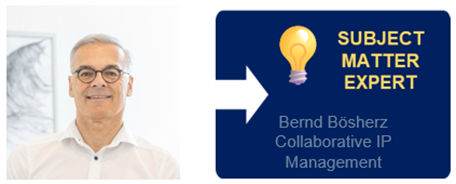 Bösherz framed IP not as a fence, but as governance for collaboration across consortia, suppliers, and research partners. His central point: when you orchestrate innovation with others, conflicts around contributions, background IP, and commercialization are design problems, not litigation problems. The solution is to codify the rules early—access rights, improvement clauses, data usage, publication practices—and bind them to product and program milestones.
Bösherz framed IP not as a fence, but as governance for collaboration across consortia, suppliers, and research partners. His central point: when you orchestrate innovation with others, conflicts around contributions, background IP, and commercialization are design problems, not litigation problems. The solution is to codify the rules early—access rights, improvement clauses, data usage, publication practices—and bind them to product and program milestones.
Why it matters for CTOs: future‑ready products rely on modules and services you don’t control end‑to‑end. Without collaboration‑ready IP structures, your ecosystem will stall at pilot stage or collapse in disputes. Treat IP clauses as part of your technical architecture: versioned, testable, and aligned with the cadence of releases.
What to do Monday: create a lightweight “collaboration IP kit” for every new program: a template set of partner agreements tied to your product lifecycle, plus a decision tree for when to patent, publish, pool, or keep trade secret.
Til Martin Bußmann‑Welsch — AI‑powered legal research: precision beats volume
 Bußmann‑Welsch cut through the hype by focusing on retrieval quality, verification, and explainability. Generative systems can summarize and hypothesize, but legal relevance depends on how well you anchor outputs in authoritative sources and how transparently you trace the reasoning. He argued for toolchains that combine retrieval‑augmented generation, source citation capture, and structured review.
Bußmann‑Welsch cut through the hype by focusing on retrieval quality, verification, and explainability. Generative systems can summarize and hypothesize, but legal relevance depends on how well you anchor outputs in authoritative sources and how transparently you trace the reasoning. He argued for toolchains that combine retrieval‑augmented generation, source citation capture, and structured review.
Why it matters for CTOs: regulatory exposure is rising. If your teams use AI to explore standards, case law, or technical norms, you need repeatable methods that produce audit‑ready work. Precision and provenance are not “nice to have”—they are the entry ticket for AI at scale.
What to do Monday: define an approved research pipeline with guardrails: curated corpora, mandatory source capture, red‑flag detection (low‑confidence passages, missing citations), and sign‑off steps that create an evidentiary trail.
Sascha Kamhuber — Patent information in the steel industry: specificity wins
 Kamhuber showed why industry‑specific patent analytics outperform generic dashboards. In capital‑intensive sectors like steel, meaningful insight requires domain ontologies (process routes, alloy classes, decarbonization levers), integration with plant data, and an understanding of ramp‑up physics. When you tailor the lens, white‑spot identification stops being a buzzword and becomes a sourcing and capex planning tool.
Kamhuber showed why industry‑specific patent analytics outperform generic dashboards. In capital‑intensive sectors like steel, meaningful insight requires domain ontologies (process routes, alloy classes, decarbonization levers), integration with plant data, and an understanding of ramp‑up physics. When you tailor the lens, white‑spot identification stops being a buzzword and becomes a sourcing and capex planning tool.
Why it matters for CTOs: the same logic applies to your domain. Generic AI will miss context that decides feasibility. Invest in classification schemes and data stitching that reflect your actual processes, not a vendor’s universal taxonomy.
What to do Monday: sponsor one applied patent‑information pilot that connects your IP analytics to a real operational decision—supplier selection, retrofit planning, or process optimization—and measure decisions accelerated, not pages produced.
Bas Albers — IP strategies for SMEs: focus beats ambition
 Albers kept things practical for smaller organizations: as budgets tighten, prioritization and protectability of real products determine impact. He emphasized building from the product outward—claiming what customers actually touch—and sequencing protection with the revenue roadmap. For SMEs, the art is in simplifying choices: differentiate with design and UX where patents are tough, and use patents to ring‑fence core technical levers where they are not.
Albers kept things practical for smaller organizations: as budgets tighten, prioritization and protectability of real products determine impact. He emphasized building from the product outward—claiming what customers actually touch—and sequencing protection with the revenue roadmap. For SMEs, the art is in simplifying choices: differentiate with design and UX where patents are tough, and use patents to ring‑fence core technical levers where they are not.
Why it matters for CTOs: many of you lead portfolios that include venture units, suppliers, or partners who look like SMEs. Their constraints are your constraints if they sit in your value chain. Right‑sized IP strategies reduce risk without freezing momentum.
What to do Monday: publish a one‑page IP playbook per product line: what to patent, what to keep secret, what to standardize, and how to time each step against releases.
Breakouts: quantum safety, physical AI, and agents in the enterprise
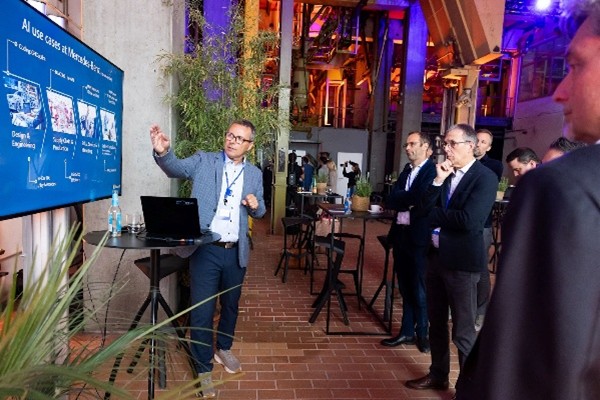 Three expert breakouts mapped the next wave of capability into CTO language:
Three expert breakouts mapped the next wave of capability into CTO language:
- Security in the Quantum Era: a pragmatic overview of crypto‑agility and migration paths. The actionable takeaway was to start inventorying cryptographic assets and dependencies now—long before you face a compliance‑driven scramble.
- How Physical AI will reshape production: a concrete look at how embodied intelligence changes line layouts, quality control, and safety. The challenge is not proof‑of‑concept robotics; it is orchestration—how scheduling, sensing, and exception handling cooperate.
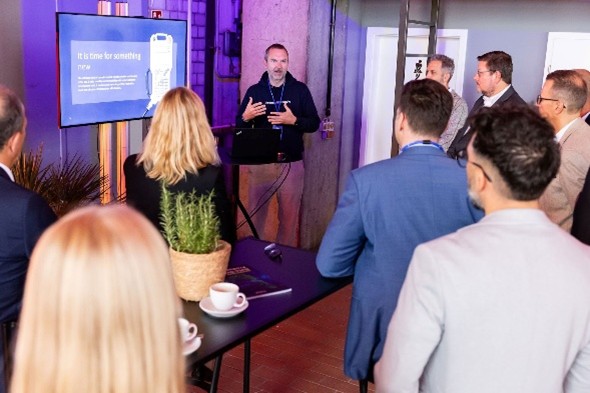 The Emergence of Agents: from assistants to frontier‑firm infrastructure. The emphasis was on governance: tool access policies, execution sandboxes, and human‑in‑the‑loop designs that reconcile autonomy with accountability.
The Emergence of Agents: from assistants to frontier‑firm infrastructure. The emphasis was on governance: tool access policies, execution sandboxes, and human‑in‑the‑loop designs that reconcile autonomy with accountability.
Together, the breakouts underlined the forum’s leitmotif: new capability only compounds where governance is explicit.
What the day told us about the CTO role
- CTOs are system designers for organizations, not just products. You architect decision rights, talent pipelines, data flows, and partner interfaces. Technology is the medium; the system is the message.
- IP has shifted from protection to production. It is an instrument to shape cooperation, qualify agentic workflows, and secure adoption of your platforms. Without the right IP posture, your ecosystem cannot scale.
- AI is operational now. The debate is no longer about pilots; it is about designing verifiable, safe, and maintainable agentic workflows across R&D, supply chain, and customer operations.
- Regulation is a design parameter. Treat it as a continuous constraint during architecture, not a late‑stage compliance hurdle.
- Sovereignty and speed require common infrastructure. Shared data models, secure toolchains, and modular designs are the only way to reconcile both.
Closing reflection
Ludwigsburg was not another conference about slogans. It was a working session among peers who carry the same operational weight. The collective message was disciplined and hopeful: Europe can combine sovereignty and speed if CTOs architect for both, turn IP into an enabler, and operationalize AI with the same rigor they apply to safety and security. The tools are here. The task is to structure them into systems that teams can trust.
